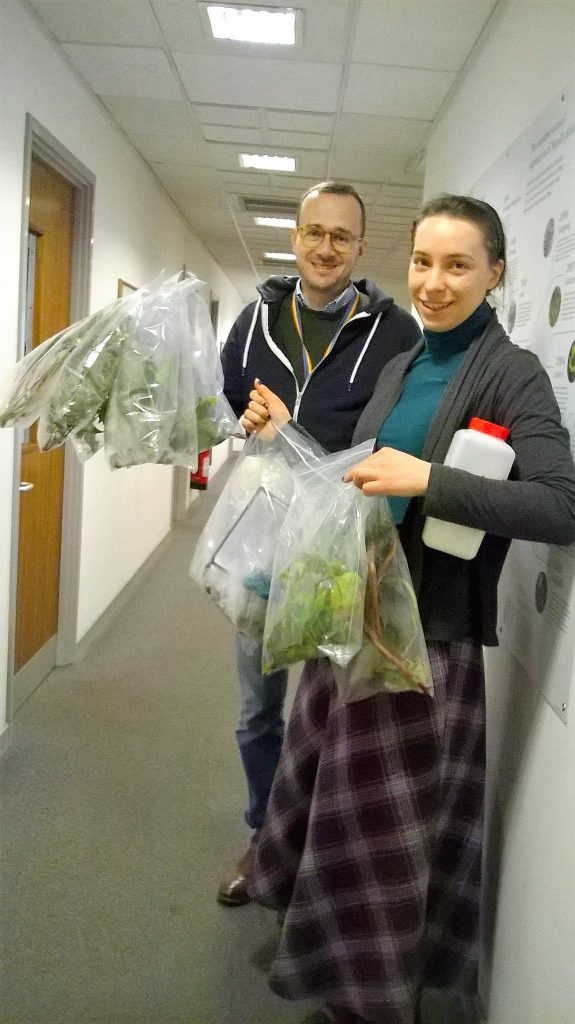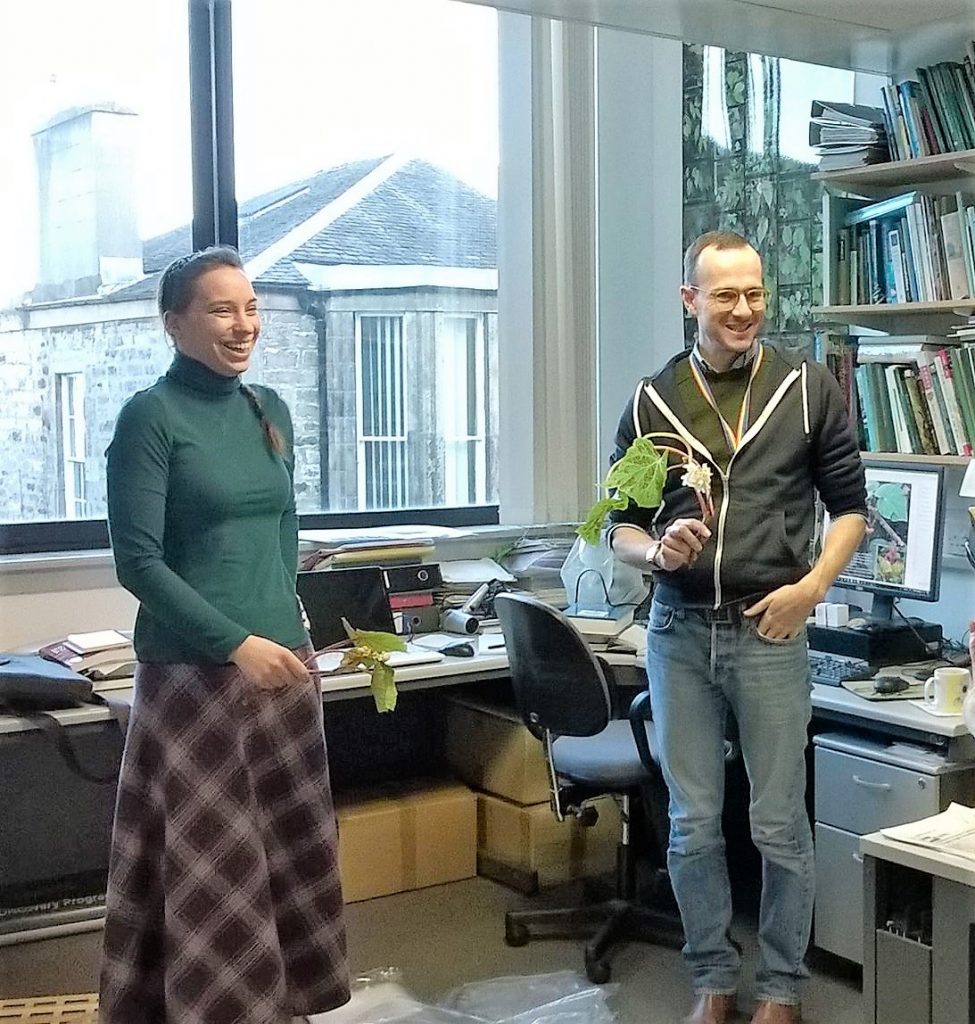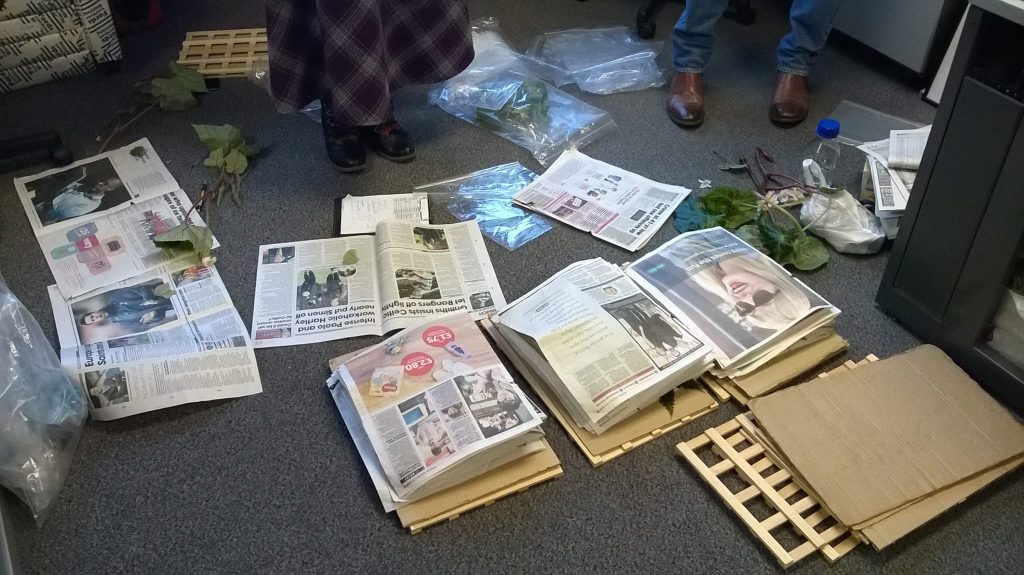In order to look at the effects of herbarium preservation methods on DNA quality, Hannah Wilson and Mark Hughes took a trip down to our research glasshouses, and brought back armfuls of Begonia collections. They sampled nine of the accessions that we have in cultivation at RBGE.
The species and accessions they selected are: Begonia arfakensis 20090808 [DNA no. 9], B. bipinnatifida 20090801 [DNA no. 1], B. ispotera 20161293 [DNA no. 4], B. scottii 20170076 [DNA no. 5], B. serratipetala 19861637 [DNA no. 7], B. stictopoda 20170115 [DNA no. 8], B. trichopoda 20161284 [DNA no. 3], B. sp. 20090938 [DNA no. 2], B. sp. 20161294 [DNA no. 6].
In order to look at how drying methods affect the DNA, four different methods were used, with the plants squashed between sheets of newspaper, in a drying press:
- at room temperature (DNA code AN)
- at elevated temperature (40° C, in the RBGE drying room) (DNA code ND)
- at elevated temperature (40° C, in the RBGE drying room), with an added alcohol wash (DNA code AD)
- with a hairdryer (DNA code H).
Hannah and Mark also pickled parts of each collection in alcohol (DNA code P), preserved some in RNAlater stabilization solution (DNA code R), and rapidly dried some in silica gel desiccant (DNA code S).
(And if you’re wondering why I’m giving you the DNA codes here, hopefully they will become useful in a subsequent Hybrid capture from degraded DNA Story, when we reveal some of our preliminary data…)
Other Hybrid capture from degraded DNA Stories:
Hybrid capture from degraded DNA: stockpiling Begonia DNA for protocol testing




